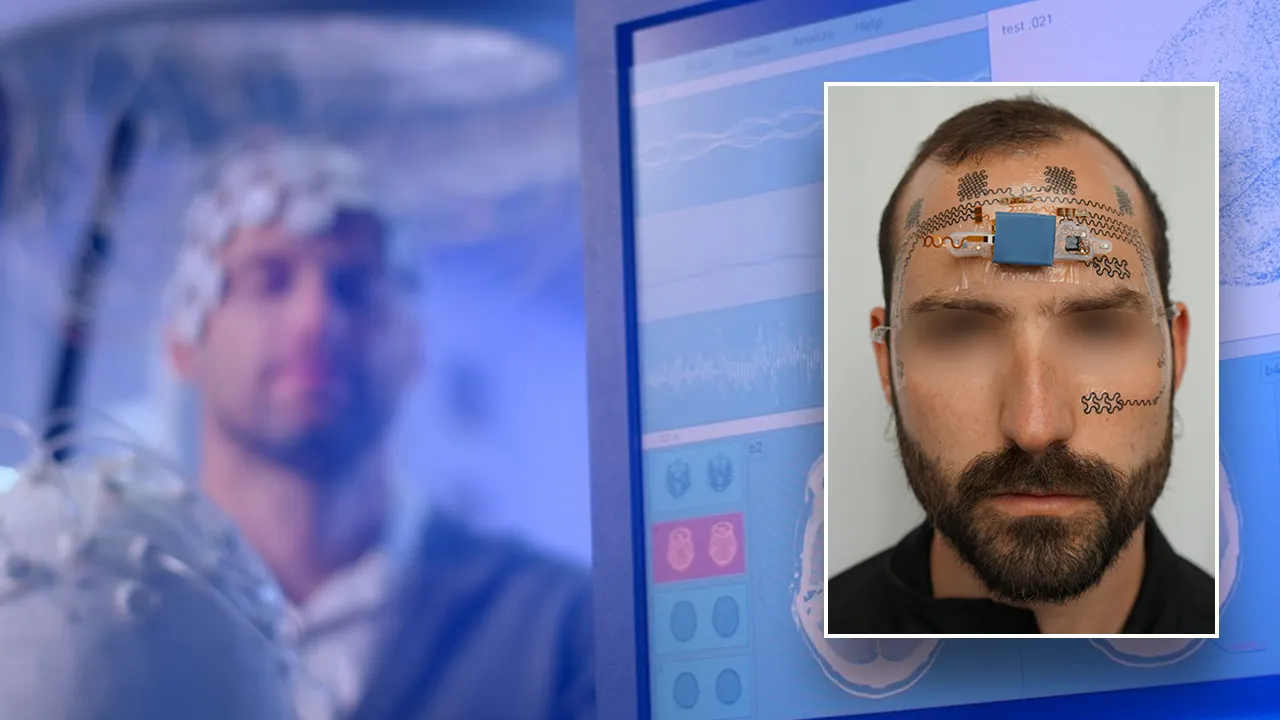**A New “E-Tattoo” Device Could Revolutionize Brainwave Monitoring for High-Stress Jobs**
In recent years, the world has witnessed enormous strides in wearable technology, particularly devices that monitor health and brain activity. Now, a team of scientists, led by Dr. Nanshu Lu from the University of Texas at Austin, has introduced a groundbreaking innovation: an “electronic tattoo” or “e-tattoo” that can be applied to a person's forehead to monitor brainwaves and track mental workload. This device, described in detail in their study published in the scientific journal Device, promises to be a more accessible, cost-effective, and user-friendly alternative to traditional brain monitoring equipment.
**What Is the E-Tattoo and How Does It Work?**
Traditional methods of monitoring brain activity, like electroencephalogram (EEG) and electrooculogram (EOG) machines, are often expensive, bulky, and require specialized environments to operate. These limitations have restricted their widespread use, especially outside of clinical or research settings. The e-tattoo developed by Dr. Lu’s team aims to change that paradigm.
The e-tattoo is, quite literally, a temporary tattoo that sticks to the user’s forehead, designed to be as thin and flexible as a sticker. Despite its diminutive size and unobtrusive appearance, the device is equipped with sophisticated sensors that can record both EEG and EOG signals. EEG tracks the brain’s electrical activity, while EOG records eye movements, both crucial metrics in assessing mental workload.
The device works wirelessly and includes a battery pack and reusable chips, paired with a disposable sensor component. This combination allows for continuous, real-time data collection without the need for cumbersome headgear or wires. The current prototype costs about $200—a fraction of the price of traditional EEG/EOG systems.
**Why Track Mental Workload?**
Dr. Lu and her team designed this technology with a specific target audience in mind: individuals working in high-demand, high-stakes environments. These include pilots, air traffic controllers, emergency room doctors, emergency dispatchers, and even operators of robotic or drone systems. In these professions, cognitive performance is not just a personal matter—it can have profound implications for public safety and operational effectiveness.
“Mental workload is a critical factor in human-in-the-loop systems, directly influencing cognitive performance and decision-making,” Dr. Lu explained in her communication with Fox News Digital. In jobs where split-second decisions can mean the difference between life and death, accurately measuring and managing cognitive fatigue is vital.
By providing a non-intrusive, real-time measure of mental workload, the e-tattoo could help employers and employees alike recognize when someone is becoming mentally overloaded. This could, in turn, trigger interventions such as additional breaks, shift changes, or even emergency support, ultimately reducing the likelihood of errors caused by cognitive fatigue.
**How Was the E-Tattoo Tested?**
In their experimental study, Dr. Lu’s team recruited six volunteers to test the e-tattoo’s ability to measure mental workload. Each participant was shown a computer screen where 20 letters flashed up one at a time in various locations. Their task was to click a mouse if the letter or its location matched one shown previously, with the difficulty level increasing across four stages.
As the tasks became more challenging, the e-tattoo recorded changes in the participants’ brainwaves and eye movements. The researchers observed that as the mental workload increased, distinct shifts in brainwave activity were detected, demonstrating the device’s sensitivity and accuracy in monitoring cognitive load.
This is a significant step forward, as it demonstrates the e-tattoo’s ability to capture nuanced changes in brain activity in real time, outside the controlled environment of a traditional lab. Because the device is both wireless and minimally invasive, it could potentially be used in actual work settings, rather than just research studies.
**Advantages Over Traditional Brain Monitoring Devices**
The e-tattoo’s primary advantage is its portability and ease of use. Conventional EEG and EOG machines often require users to wear uncomfortable headbands or caps, sometimes with electrodes glued to the scalp, and are tethered to stationary equipment. This setup is not only inconvenient but also impractical for everyday or on-the-job use.
By contrast, the e-tattoo is designed to conform seamlessly to the skin, much like a decorative temporary tattoo. It can be easily applied and removed, and its discreet appearance minimizes any potential stigma

